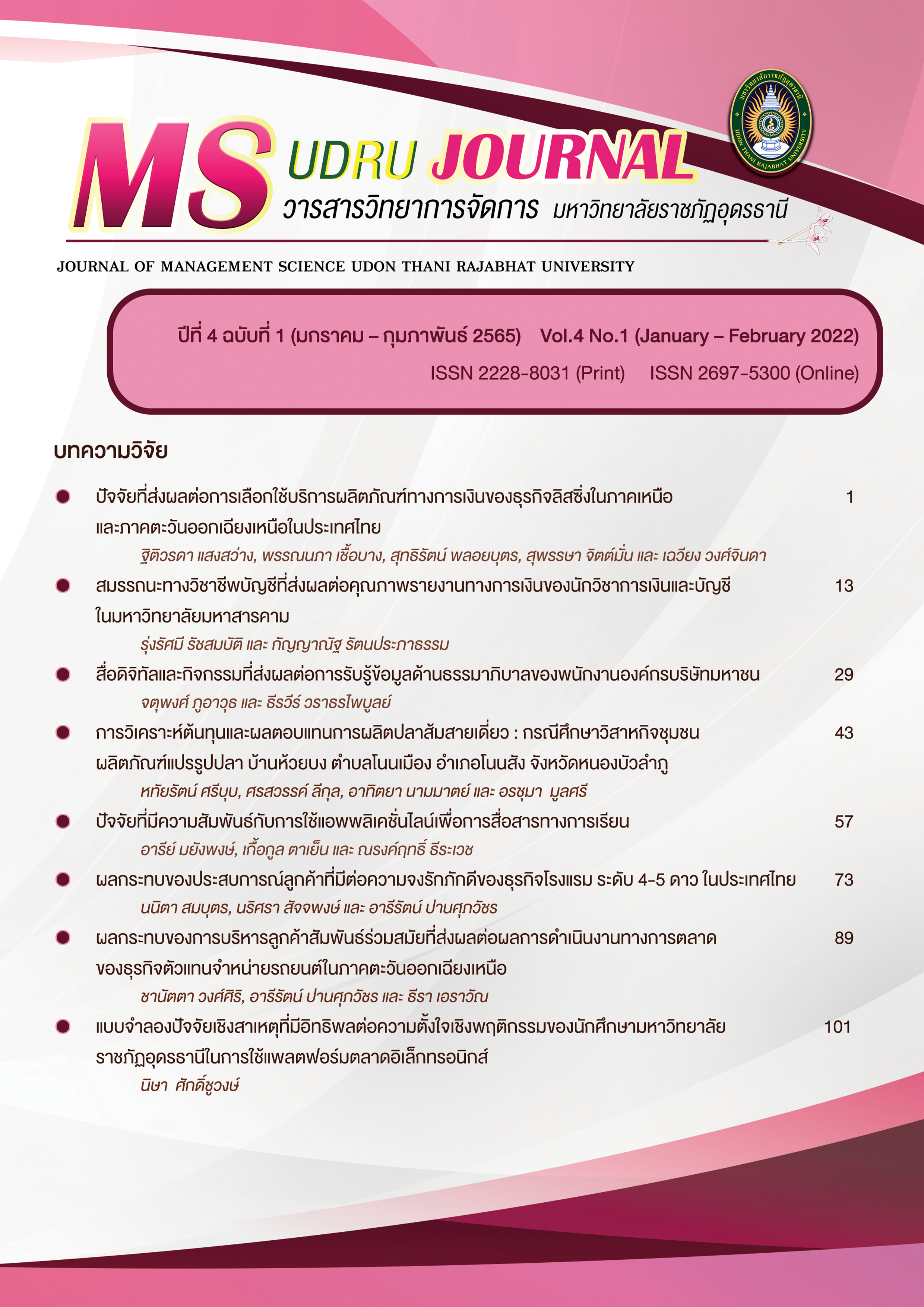DIGITAL MEDIA AND ACTIVITIES AFFECTING THE PERCEPTION OF GOVERNANCE INFORMATION OF PUBLIC COMPANY EMPLOYEES
Main Article Content
Abstract
The purposes of this study were to study 1) digital media that affect employees' perception of good governance 2) activities that affect employees' perception of governance information 3) direction of the relationship between digital media and activities 4) rational communication models that affect employees' perceptions of governance are developed to be more effective. This is a quantitative methodology research. The sample used for this study were 450 employees in public companies. The tools used in the study was the questionnaire with the content validity of 0.950 and the reliability of 0.953. The data analysis was conducted by using descriptive and inferential statistics including percentage, mean, standard deviation, Skewness and Kurkosis, Confirmatory Factor Analysis and Structural Equation Modeling (SEM). The results were shown that employees got the most governance information from campaign activities ( = 4.69). The second was a test (
= 4.60) E-learning (
= 4.58) respectively, And Structural Equation Modeling (SEM) It can be concluded that digital media and activities affect the perception of governance information of employees in public companies which was harmonious with empirical data. The analysis of Structure Equation Model (SEM) found that the proportion of statistical values
/df= 1.967, GFI= 0.969, AGFI= 0.931, NFI= 0.986, RMSEA= 0.046, RMR= 0.019 All values from Structural Equation Modeling (SEM) conformed to the criteria.
Article Details

This work is licensed under a Creative Commons Attribution-NonCommercial-NoDerivatives 4.0 International License.
บทความที่ได้รับการตีพิมพ์เป็นลิขสิทธิ์ของคณะวิทยาการจัดการ มหาวิทยาลัยราชภัฏอุดรธานี
ข้อความที่ปรากฏในบทความแต่ละเรื่องในวารสารวิชาการเล่มนี้ ไม่ใช่ความคิดเห็นและความรับผิดชอบของผู้จัดทำ บรรณาธิการ กองบรรณาธิการ และคณะวิทยาการจัดการ มหาวิทยาลัยราชภัฏอุดรธานี ความรับผิดชอบด้านเนื้อหาและการตรวจร่างบทความแต่ละเรื่องเป็นความคิดเห็นของผู้เขียนบทความแต่ละท่าน
References
ฐาปนีย์ ธรรมเมธา. (2557). อีเลิร์นนิง: จากทฤษฎีสู่การปฏิบัติ e-Learning: from theory to practice. นนทบุรี: สหมิตรพริ้งติ้งแอนด์พับลิสชิ่ง.
บรรยงค์ โตจินดา. (2543). การบริหารงานบุคคล. กรุงเทพฯ: รวมสาส์น.
รุ่งนภา พิตรปรีชา. (2552). การรณรงค์และผลิตงานโฆษณา. กรุงเทพฯ: จุฬาลงกรณมหาวิทยาลัย.
ศิธาพิสุทธิ์ พรหมสาขา ณ สกลนคร. (2559). การรับรู้ข่าวสาร ทัศนคติและพฤติกรรมของกลุ่มแรงงานก่อสร้างต่อสื่อรณรงค์การเลิกสูบบุหรี่ในเขตกรุงเทพมหานคร. วารสารการสื่อสารและการจัดการนิด้า, 2(1), 61-80.
สถาบันพระปกเกล้า. (2558). ดุลยอำนาจในการเมืองการปกครองไทย. กรุงเทพฯ: สถาบันพระปกเกล้า.
สำนักงานสภาพัฒนาการเศรษฐกิจและสังคมแห่งชาติ. (2563). ดัชนีชี้วัดภาพลักษณ์คอร์รัปชัน. สืบค้นเมื่อ 25 พฤศจิกายน 2564, จาก https://www.nesdc.go.th/article_attach/article_file_20200127094731.pdf.
Arbuckle, J. L. (2011). AMOS 20.0 users guide. Crawfordville, FL: Amos Development Corporation.
Hair, J. F., Black, W. C., Babin, B. J. & Anderson, R.E. (2010). Multivariate data analysis: A global perspective. Upper Saddle River NJ: Pearson.
Tabachnick, B.G. & Fidell, L.S. (1996). Using Multivariate Statistics. 3rd ed. New York: HarperCollins.

